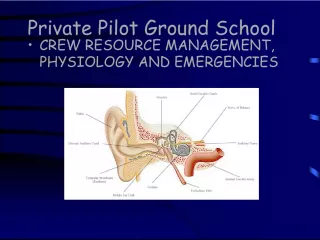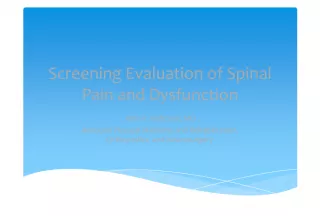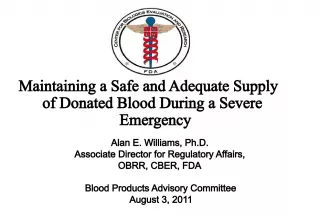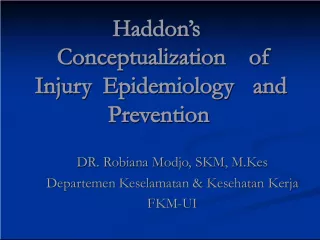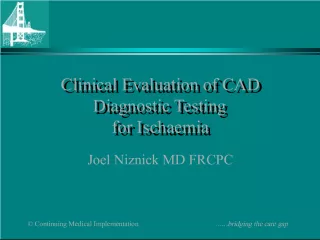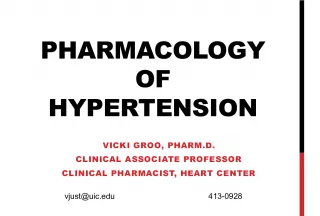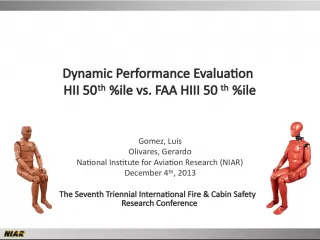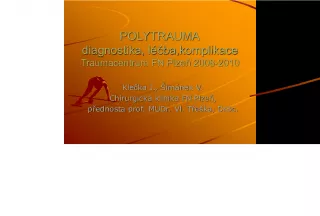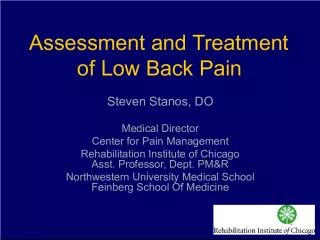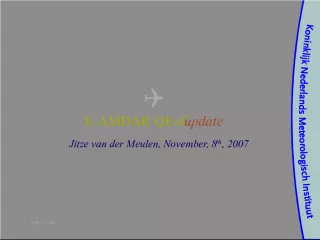Orthopedic Emergencies and Vascular Injury Evaluation and Treatment
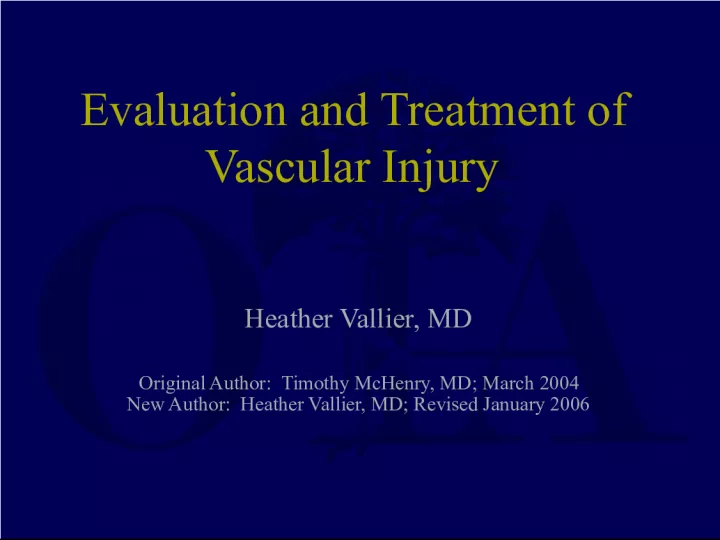

This article highlights potential orthopedic emergencies including open fractures, irreducible dislocations, amputation, and vascular injury. It also discusses the evaluation and treatment of vascular injury by orthopedic specialists.
- Uploaded on | 3 Views
-
 sandramenard
sandramenard
About Orthopedic Emergencies and Vascular Injury Evaluation and Treatment
PowerPoint presentation about 'Orthopedic Emergencies and Vascular Injury Evaluation and Treatment'. This presentation describes the topic on This article highlights potential orthopedic emergencies including open fractures, irreducible dislocations, amputation, and vascular injury. It also discusses the evaluation and treatment of vascular injury by orthopedic specialists.. The key topics included in this slideshow are . Download this presentation absolutely free.
Presentation Transcript
1. Evaluation and Treatment of Vascular Injury Heather Vallier, MD Original Author: Timothy McHenry, MD; March 2004 New Author: Heather Vallier, MD; Revised January 2006
2. Potential Orthopedic Emergencies Open fracture Irreducible dislocations Vascular injury Amputation Compartment syndrome Unstable pelvic fracture/ hemodynamic instability Multiply-injured patient Spinal cord injury Displaced femoral neck and talar neck fractures
3. Potential Orthopedic Emergencies Open fracture Irreducible dislocations Vascular injury Amputation Compartment syndrome Unstable pelvic fracture/ hemodynamic instability Multiply-injured patient Spinal cord injury
4. Vascular injury the clock starts ticking Blood loss Progressive ischemia Compartment syndrome Tissue necrosis Irreversible damage after 6 hours
5. Vascular injury Increased incidence with: Proximity of vessels to bone Tethering of vessels at joints Superficial location of vessels
6. Arterial injuries associated with fractures or dislocations Clavicle fracture subclavian artery Shoulder fx/dislocation axillary artery Supracondylar humerus fx brachial artery Elbow dislocation brachial artery Pelvic fracture gluteal arteries iliac arteries Femoral shaft fx femoral artery Distal femur fracture popliteal artery Knee dislocation popliteal artery Tibial shaft fx tibial arteries
7. Incidence of Fracture or Dislocation with Vascular Injury Uncommon 3% of long bone fractures Specific circumstances Fractures with GSW (up to 38%) Knee dislocations (16-40%)
8. Mechanism of Injury Penetrating trauma GSW Stab Blunt trauma High energy Low energy Iatrogenic Blunt trauma with 27% amputation rate vs 9% for penetrating in Natl Trauma Database, Mullenix PS, et al. J Vasc Surg 2006
9. Types of vascular injuries Spasm Intimal flaps Subintimal hematoma Laceration Transection Thrombosis/Occlusion A-V fistula Some require treatment, some do not
10. Consequences of vascular injury Blood loss Ischemia Compartment syndrome Tissue necrosis Amputation Death
11. Prognostic factors Level and type of vascular injury Collateral circulation Shock/hypotension Tissue damage (crush injury) Warm ischemia time Patient factors/medical conditions
12. Speed is crucial Rapid resuscitation Complete, rapid evaluation Urgent surgical treatment PROTOCOL IS ESSENTIAL !
13. Immediate treatment Control bleeding Replace volume loss Cover wounds Reduce fractures/dislocations Splint Re-evaluate
14. Diagnosis Physical exam Doppler pressure (Ankle/brachial systolic pressure index (ABI)) Duplex scanning Arteriogram Exploration
15. Diagnosis Physical exam Doppler pressure (Ankle/brachial systolic pressure index (ABI)) Duplex scanning Arteriogram Exploration Careful physical exam and high index of suspicion are most important !
16. Physical exam Major hemorrhage/hypotension Arterial bleeding Expanding hematoma Altered distal pulses Pallor Temperature differential between extremities Injury to anatomically-related nerve
17. Asymmetric pulses warrant doppler examination (determine ABI) Absent pulses warrant emergent vascular consultation/surgical exploration
18. Doppler Ultrasound Determine presence/absence of arterial supply Assess adequacy of flow PRESENCE OF SIGNAL DOES NOT EXCLUDE ARTERIAL INJURY !
19. Doppler Ultrasound for Knee Dislocation Abnormal ABI < 0.90 Does not define extent or level of injury Abnormal values warrant further evaluation ABI > 0.90 can be observed (i.e. no arteriogram) Mills, et al. J. Trauma 2004
20. Duplex Scanning Noninvasive Safe Rapid Reliable for Injury to arteries and veins A-V fistulas Pseudoaneurysms
21. Duplex vs Arteriography in Evaluating Iatrogenic Arterial Injuries in Dogs
22. Duplex scanning Requires technician and scanner availability Not all surgeons will operate based on duplex information alone
23. Click image to zoom out
24. Angiography Locates site of injury Characterizes injury Defines status of vessels proximal and distal May afford therapeutic intervention
25. Angiography Identify and control (i.e. embolization) bleeding from pelvic fractures
26. Angiography Expensive Time-consuming Difficult to monitor/treat trauma patient in angiography suite Procedural risks Renal burden from dye Possibility of anaphylaxis Injury to proximal vessels
27. CT Angiography Alternative to conventional angiography Good sensitivity and specificity Costs much more ANGIOGRAPHY WILL DELAY REVASCULARIZATION. It is not indicated in cases with absent pulses/complete transection, which should go immediately to surgery Redmond, et al. Orthopedics 2008
28. Operative angiography Single view in operating room Rapid Excellent for detecting site of injury
29. Surgical exploration Immediate exploration is indicated for: Obvious arterial injury on exam No doppler signal Site of injury is apparent Prolonged warm ischemia time
30. No pulses Asymmetric pulses Normal exam Reduce, stabilize, resuscitate Injury obvious Multilevel injury ? Doppler ABI >0.9 ABI <0.9 Angiography or duplex Surgery Observation Modified from Brandyk, CORR 2005
31. Continued evaluation Vascular injuries are dynamic Evaluation should continue after the initial injury or surgery Additional debridement and/or fixation undertaken after successful revascularization
32. Continued evaluation Circulation Neurologic function Compartment pressures
33. Surgical considerations Who goes first? Temporary shunts Fracture stabilization Salvage vs amputation Fasciotomies
34. Surgical considerations Who goes first? Discuss with vascular surgeon Temporary shunts Will benefit some patients Fracture stabilization Consider provisional ex fix Salvage vs amputation Trend toward salvage (LEAP) Fasciotomies Prophylactic after Ischemia
35. Conclusions Potential exists with every orthopedic injury Uncommon Be aware of injuries associated Understand signs and symptoms of arterial injury
36. Conclusions Time is crucial Paramount for diagnosis High index of suspicion Thorough physical exam Have a defined protocol/relationship with your colleagues from vascular and trauma surgery
37. Return to General/Principles Index E-mail OTA about Questions/Comments If you would like to volunteer as an author for the Resident Slide Project or recommend updates to any of the following slides, please send an e-mail to ota@aaos.org
